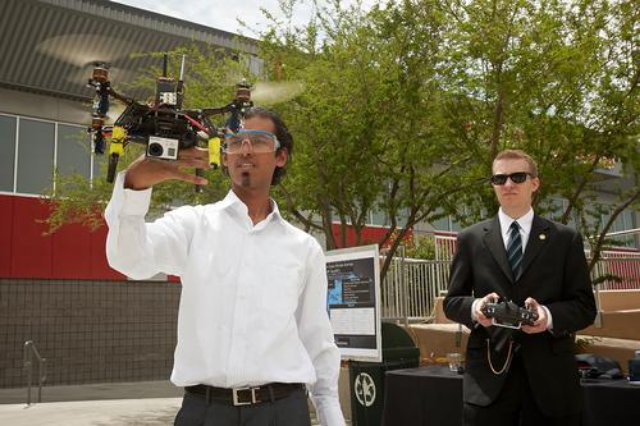 A growing number of universities have launched or are considering UAS degree programmes, including Arizona State, Kansas State, Oklahoma State, Virginia Tech, and Embry-Riddle, as well as the University of North Dakota and the University of Nevada, Las Vegas (UNLV).
A growing number of universities have launched or are considering UAS degree programmes, including Arizona State, Kansas State, Oklahoma State, Virginia Tech, and Embry-Riddle, as well as the University of North Dakota and the University of Nevada, Las Vegas (UNLV).
Many more are offering individual courses and UAS clubs under the auspices of their engineering colleges. The Association for Unmanned Vehicle Systems International (AUVSI) has tracked approximately 150 colleges that currently offer some form of UAS education.
”It’s going to be a game-changer for a number of industries,” Melanie Hinton, spokesperson for AUVSI, told Design News. “You can name any industry — oil and gas, construction, farming, real estate, and even photography — and it will probably be using unmanned aerial systems.”
Indeed, the growth projections are almost mind-boggling. In the next three years, AUVSI predicts that 70,000 new jobs will be created by UAVs, with 34,000 of them in manufacturing and design. By 2025, the industry will grow to about $82 billion and create approximately 100,000 jobs, Hinton told us. The growth will involve all kinds of UAS, ranging from remote-controlled, to autonomous and handheld, to aircraft-sized.
The civilian side of the equation will be a classic swords-to-plowshares story. Agriculture will account for about 80 percent of the business, with aerial vehicles providing a new view of farming. Hinton said that Virginia Tech is developing agricultural systems for examining disease and pestilence using small UAS to swoop in low to get a birds-eye view of crops. UAS will also serve in land and real-estate surveying, firefighting, environmental applications, and, of course, defense.
”Before, sensors were always stationary,” Thomas Piechota, UNLV’s interim vice president for research and economic development at UNLV’s Howard R. Hughes College of Engineering, told us. “But here, you have sensors on a mobile platform that can do all kinds of surveillance in a dynamic environment.”
For engineering students, it will mean an education of greater breadth. Some students will need to be educated in areas of materials, components, and vehicle design. Others will study RF communications. Still others will need to combine engineering with flight training and/or studies of policy issues. ”If you start flying over civilian areas and collecting data about people’s daily lives, engineers will need to be aware of the ramifications,” Piechota told us.
To make it all happen, the Federal Aviation Administration (FAA) plans to change its policies. With some exceptions, the agency currently doesn’t allow for commercial use of drones. But a Congressional mandate has called for the agency to produce a roadmap to allow for safe integration of UAS. ”By fall of 2015, you’ll start to see integration of small unmanned aerial vehicles in the national airspace,” Hinton said.
Until then, engineering colleges are preparing themselves and getting the word out. “It’s a great way to attract students into science, technology, engineering, and math,” Piechota told us. “It helps them to see a clear path into technology.”
Photo: UNLV mechanical engineering students work on the variable-pitch Quadrotor -University of Nevada, Las Vegas
Source: Design News
